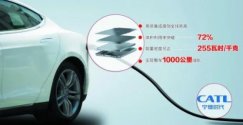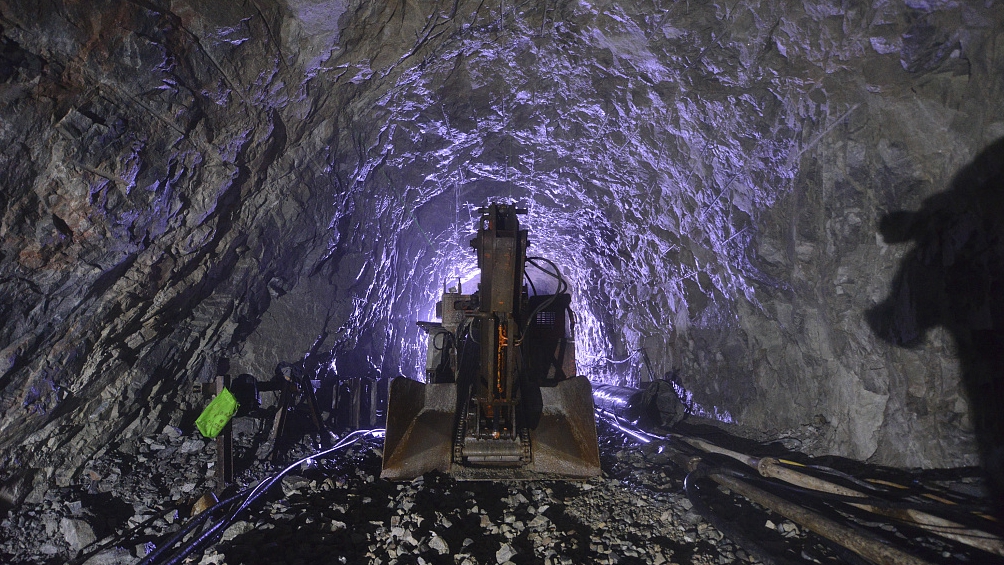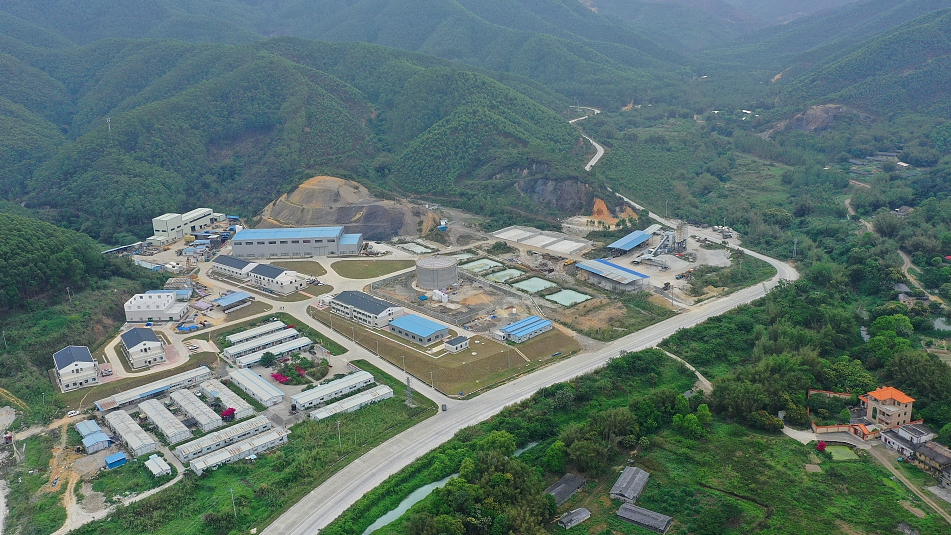China completes main structure of its neutrino detector
The construction site of JUNO about 700 meters underground, February 20, 2017. /CFP
China has achieved a major breakthrough in the building of its next-generation neutrino detector, Jiangmen Underground Neutrino Observatory (JUNO), with the completion of the detector's main structure, some 700 meters underground in Jiangmen City, south China's Guangdong Province.
The main structure, a huge spherical stainless-steel grid, China's largest so far, will support the core of JUNO, a 13-story-tall spherical detector which will be covered by 20,000 light detecting photomultiplier 20-inch (50.8cm) tubes and filled with 20,000 tonnes of specially formulated liquid. The whole structure is constructed at the center of a water pool under a huge cave in Jiangmen.
A steel elevating platform has been made in the water pool so that an acrylic sphere can be constructed inside the steel grid layer by layer from top to bottom. The photomultiplier tubes and other parts will also be mounted to the steel grid simultaneously. Upon completion, the acrylic sphere will be filled with a liquid scintillator, and the water pool will cover the whole detector to protect it from the natural radioactivity of the surrounding rocks.
With neutrinos going through the detector, a very small part of them will interact with the liquid scintillator, producing scintillation light detected by the photomultiplier tubes as neutrino signals for further calculation and study. Besides neutrinos from nuclear reactors, JUNO can also study neutrinos from supernova, the sun, earth and our atmosphere.
An aerial view of JUNO, March 23, 2021. /CFP
JUNO is operated by the Institute of High Energy Physics under the Chinese Academy of Sciences (CAS). Reactor neutrinos for JUNO to detect and measure will be provided by Yangjiang and Taishan nuclear power plants, both over 50 kilometers away.
The 2-billion-yuan (about $305.3 million) instrument is expected to be completed and put into use around 2023. The new machine is designed to detect and measure neutrinos' quality order with unprecedented precision and energy resolution, with the aim of uncovering more insights on their mass, how they can change identities midflight in a process called oscillations and solve more mysteries about the perplexing elementary particle, which is both extremely abundant and difficult to spot, according to the CAS.





